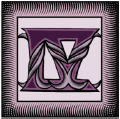|
 A number is a
quantity associated with a symbol or numeral that represents that
quantity. This is constant throughout civilization. Numerals are changeable
because they reflect the written language from different cultures, but they
still represent the same quantity. A number is a
quantity associated with a symbol or numeral that represents that
quantity. This is constant throughout civilization. Numerals are changeable
because they reflect the written language from different cultures, but they
still represent the same quantity.
The cardinal numbers
refer to a collection of items such as the number of animals in a group (i.e.
10 cats). Ordinal numbers specify the succession of specific elements
of a group (i.e., the man is first on line). Numbers are grouped into
irrational and rational. Irrational numbers continue to infinity
and cannot be expressed as a fraction. We will investigate some very famous
irrational numbers in a later chapter. Rational numbers can be expressed as a
fraction or ratio. The numerator and denominator are
integers.
 A ratio is a
mathematical way of showing a relationship of two numbers, six is to twelve.
We can symbolically use a fraction to make it easier to read 6/12.
Mathematical symbols allows us to compare numbers and find equal proportions,
for example, six is to twelve as three is to six (6/12=3/6). We now are using
numbers to create a proportion. A proportion is an equation with a ratio on each side. It is a statement
that two ratios are equal. A ratio is a
mathematical way of showing a relationship of two numbers, six is to twelve.
We can symbolically use a fraction to make it easier to read 6/12.
Mathematical symbols allows us to compare numbers and find equal proportions,
for example, six is to twelve as three is to six (6/12=3/6). We now are using
numbers to create a proportion. A proportion is an equation with a ratio on each side. It is a statement
that two ratios are equal. |